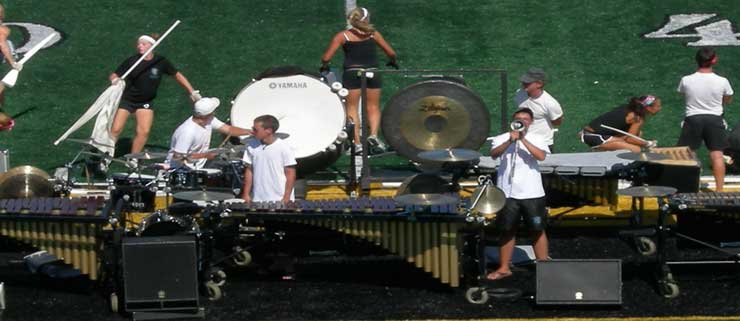 Music Ed Blogger Stephen McClard recently passed on to me a very interesting essay by Paul Harris, a music teacher in Great Britain, who espouses the use of a technique he calls "simultaneous learning." His ideas are educationally sound, building on the ideas that to be a better musician the student must focus on scales and etudes as the primary building blocks of their learning. From the teacher's perspective though he pushes more weight on how we teach these elements rather than how we teach larger pieces of literature:
Music Ed Blogger Stephen McClard recently passed on to me a very interesting essay by Paul Harris, a music teacher in Great Britain, who espouses the use of a technique he calls "simultaneous learning." His ideas are educationally sound, building on the ideas that to be a better musician the student must focus on scales and etudes as the primary building blocks of their learning. From the teacher's perspective though he pushes more weight on how we teach these elements rather than how we teach larger pieces of literature:
Harris' view of simultaneous learning in some ways turns the more common idea of a lesson on its head. Most teachers give lessons in which they work on scales, etudes, ensemble pieces, and large group arrangements in the same order each week. Most of the time we focus on fixing errors and moving on to the next piece of music in the rotation. From Harris' perspective:
Perhaps this is a very idealized view of how a person could teach a student to play an instrument. In most school music programs teachers are forced to think about the next performance and to do everything in their power to make sure that every student in their care knows how to play each part perfectly. Time constraints and other issues will always put an undue amount of pressure on the teacher to teach to the test (concert) yet we all agree that teaching the fundamentals through etudes and scales is the way that a true musician develops his or her craft. Perhaps with a little time and commitment to the challenge more music teachers will heed the call and work away from "drill and kill" and closer toward the simultaneous learning ideal that Harris utilizes.







 Scroll down to view the comparison chart of over a dozen different portable digital audio recorders.
Scroll down to view the comparison chart of over a dozen different portable digital audio recorders.